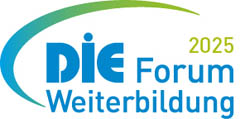OER: Unstoppable or Unsustainable?
Berlin, December 2008 - In the plenary session "Open Educational Resources: Unstoppable or Unsustainable?" at ONLINE EDUCA Berlin, Richard Baraniuk, charismatic pioneer of the Open Educational Resources movement discussed the extent to which Open Educational Resources (OER) have become a sustainable part of education with several other experts.
The distinguished panel discussed the best organizational model to choose, how to make sure high quality is maintained, and what implications OER will have for the publishing industry.
Richard Baraniuk is Professor of Electrical and Computer Engineering at Rice University, USA and founder of Connexions, a non-profit publishing project that brings textbooks and learning materials into the Internet Age. Baraniuk claimed that a considerable number of students in the US are still dropping out of university not because they are not able to afford the tuition fees but to buy the expensive textbooks. In the past ten years, prices of textbooks have risen twice as fast as inflation.
In order to offer students worldwide access to high-quality educational content, Connexions offers material for free on the web and at very low cost in print by inviting authors, instructors, and learners worldwide to "create, rip, mix, and burn" textbooks, courses, and learning materials from its global open-access repository. Each month, Connexions' free educational materials are used by over 850,000 people from over 200 countries.
Baraniuk is convinced that in the long run, all content providers will have to offer educational content for free. Publishers will have to find new business models in the long tail of publishing, which basically means selling added values (e.g. Redhat offering Service and helpdesk, Linux on DVD, etc.) instead.
Prof. Francesco Pedró, OECD, Centre for Educational Research and Innovation (CERI), France, said that there is a paradox that accompanies with Open Educational Resources. On one side, there is growing competition for educational resources, which are key intellectual capital of higher-education institutions (HEI). On the other hand, though, HEIs share educational resources openly.
Pedró presented results of a study built on previous OECD work on eLearning and gave answers to why this is happening, who is involved, and what the most important implications of this development are.
The report offers a comprehensive overview of the rapidly changing phenomenon of Open Educational Resources and the challenges it poses for higher education. Many HEIs fear a loss of registered students when offering free educational content. But there will always be a need for diplomas and certificates. Tutoring is an added value of higher-education institutions.
Some institutions are not moving, as they expect problems with copyrights and the quality of resources. But Pedró sees a big risk in doing nothing. Even though there still is a strong demand in training regarding copyrights, he believes that there are lots of successful business models ahead.
Artur Dyro is co-founder of the Polish company Young Digital Planet (YDP). He believes that educational publishers need to invest more in the development of online content if they want to compete with open educational resources in the long run. He is one expert who is convinced that commercial and open content can coexist fruitfully in the future.
There is, though, a need to understand the roles of those two players and the scope of their publishing activities, he contends. Any generic content suitable for a large number of end users that requires specific and high-quality authorship skills or investments to be created will probably be the domain of commercial publishers.
Any adaptations or amendments of such content should be the domain of open content. If commercial publishers would allow students and teachers to pick and choose, to modify, to enrich contents easily with individualized contexts, and finally, to share modified content with others, respecting appropriate licenses, Dyro predicts that both worlds will be able to coexist.








